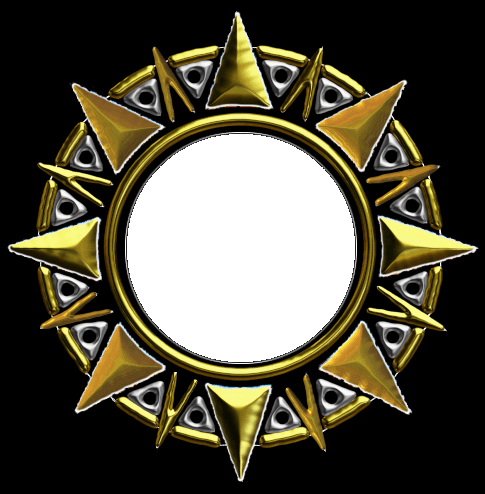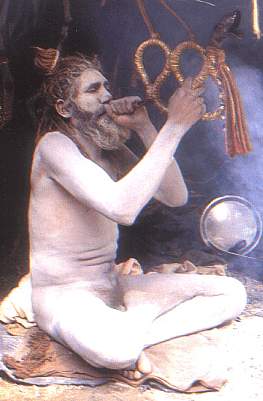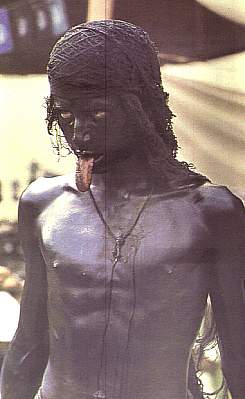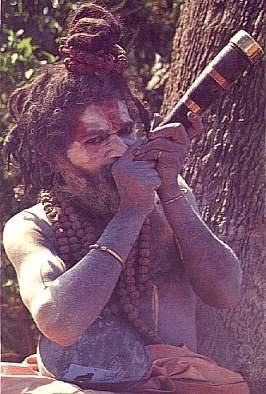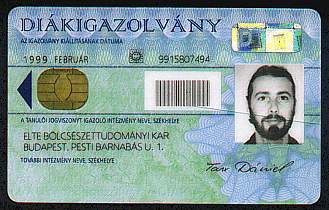 |

CULTURAL
ANTHROPOLOGY


The
Cult of Siva
| |
In
my thesis I carry out an extended analyses of the Cult
of Siva and the followers and practices of the sadhu sects
following the shaiva lineage of tantric Hinduism. The
thesis consists of four major chapters:
The
first chapter consists of the detailed description
of my two fieldworks to Northern-India
and Nepal, where I had a chance of meeting with a large
number of sadhus. I also give a brief introduction to
Hindu-Buddhist culture in the Himalayan region and the
special cross-cultural Hindu-Buddhist phenomena called
Tantrism. I briefly talk about the differences of Buddhist
tantra (Tibetan Buddhism) and Hindu tantra (Sadhu practice).
For detailed reference on my anthropological field work
please follow this link to»Fieldwork.
The
second chapter deals with Shaivism
– the Hindu religious philosophical doctrine concerning
the god Siva. In the first part I give a brief analyses
of the development of the cult of Siva and trace the tantric
tradition back to pre-aryan times to the dravida people
of the Indus Civilization. I argue that the tantric tradition
might be older than Vedic Hinduism and constitutes the
basic teachings of both the Puranic Hindu culture and
folk religions especially on the side of fertility cults.
I than argue that Indian ascetics, widely known as sadhus,
are the living representatives and followers of the tantric
tradition. I also emphasize that orthodox Hinduism based
on the teachings of the Vedas and represented by the priest
cast of brahmins; and non-orthodox Hinduism based on tantric
practice and represented by the cast of sadhus strongly
differ and have their own ways and are entirely two separate
traditions... |
| The
second part of the second chapter deals with the mythic
representations of Siva
drawing a complex picture of the infinitely multiple nature
of the deity. I give a short description of the mythic
background of all aspects of Siva starting from the Vedic
representations of Rudra, Agni, Indra, Mahadeva, Mahesvara,
Isvara, Mahesa and Jalamurti to the Brahmanic representations
of Siva; Trilocana, Bhutesvara, Bhairava, Ugra, Ummat,
Aghora, Sambhu, Sankara, Pasupati, Gangadhara, Candrasekhara,
Nilakantha, Mahayaogi, Nataraja, Natesa, Ardhinisvara
and Kamesvara. I also talk about the mythic representations
of the various energies (sakti) connected to Siva in forms
of his female consorts, both positive – Devi (Jaganmata,
Annapurna, Mata, Amman, etc.), Sakti, Kamesvari, Sati,
Parvati, Haimavati – and negative – Durga (Kotravai, Elamma),
Kali, Kalaratri, Bhajravi, Candi, mahesvari, Camunda and
Cinnamasta. Then I give an enumeration of the forces unfolding
from the siva-sakti intercourse, the children of Siva
– Skandha, Kumara, Muruhan, Ganesh and Ajjappan – and
the animal consorts: the cobra (Naga, Mucilinda, Dharanendra,
Ananta, Sesa, Taksaka, Vasuki) and the cow (Nandi).
The
third part of the second chapter describes briefly the
major philosophical schools and religious movements relating
to Shaivism, looking
at their historical background major figures and most
important philosophical doctrines. The schools discussed
here are the early monistic shaivism of Ramanuja and the
dualist shaivism of Madhava, the philosophies of the Kashmir
Saiva (Pratyabhijna), the Saiva Siddhanta, the Lingayat
(Vira Saiva) and the Dasnami Sannyasi. |
| 
The
third chapter deals with the ascetic
tradition. In the first
part I give a short introduction to the development
of the ascetic tradition as it can be reconstructed
from the Vedas and talk about the wide spread phenomena
of asceticism popular to all religious sects of
India
.
I describe how difficult it is to distinguish the conceptual
differences of early asceticism and the efforts of categorization.
My argument leads to the clear distinction of the samayin
or "right hand path" and the kaula or "left
hand path" tradition in tantric though and practice.
I argue that this tradition is the ground for the Puranic
Hindu concept of Trimurti - the trinity of God: Brahma
the Creator, Visnu the Preserver and Siva the Destroyer.
I see the same tradition in reflected in the beliefs
and practices of sadhu sects. Following Dolf
Hartsuiker's line of thought I distinguish the two
major trends of vaisnava and saiva line: sects following
Lord Visnu and sects following Lord Siva.
In
the second part I talk about the Shaiva traditions of
the left hand path and try to reconstruct the picture
of the early ascetics and create my own list of Shaiva
sadhu sects giving an enumeration and short description
of the major aspects and doctrines of various sects.
I start with the early sadhu sects – the Pashupata,
Kapalika and Kalamukha sects in detail and try to distinguish
them from other contemporary ascetic sects like the
bhikshu (Buddhist), jaina and ajivika sects. Then
I describe the Natha (Goraknath), the Aghori, the Kalika,
the Thug, the Shakta, the Naga and the Udasin sadhu
sects. |
|
| The
third part of the third chapter deals with the lifestyle
and practices of the sadhu sects. I write about the
general daily routine of leading an ascetic way of life
and the ideology that lies behind the acts of sadhana. I
then give my own interpretation of Yoga, seeing it as
a complex system of exercises aiming at the final act
of liberation. I distinguish four major disciplines
of yoga: Hatha-, Laya-, Raja- and Tantra-yoga and make
an enumeration of various exercises and rituals practiced
by the different sects and place them in the system,
claiming that each particular exercise belongs to a
special kind of yoga which has its own way of achievement...
My original intention was to write about all the exercises
practiced by most sadhu sects, but as is a lifetime's
work, I had to narrow the topic down to two types of
yoga - hatha-yoga and tantra-yoga - mainly practiced
by most shaiva sects.
In
considering the hatha-yoga exercises in addition to
the traditional philosophical explanations, I write
about how to cleanse the body (satkarma); about different
postures and ways of concentrating (asana & mudra);
about withdrawing the senses (pratyahara); and activating
the subtle energy systems (pranayama & nadicakra).
In connection with the tantra-yoga exercises in addition
to the traditional philosophical explanations, I write
about mastering pleasure (sukha bhoga); mastering ecstasy
(cakra-puja & panca-makara); and mastering magical
powers (siddhi). I take some time on writing about the
traditional usage of psychedelic drugs in the sadhu
tradition and on the nature of sexual intercourse as
a religious practice. |
| |
To
end the third chapter, I give an anthropological evaluation
of the ascetic tradition. I argue that sadhus are indeed
the representatives of universal principles and are not
only acting like living gods, but are also treated as
such by their own cultural environment. I also analyze
the phenomenon in respect to various anthropological views
like the totemism of Durkheim or Marett – where I see
sadhus as living totems – or the fetishism of Brosses
– where I see sadhus as living idols of cultic worship
– or the symbolism of Eliade – where I see sadhus as living
hierophanies (emanations of sacredness). Altogether I
can only treat the sadhu phenomenon as the original human
effort of becoming one with God and participating in and
acting on its power.
The
fourth chapter is a short one briefly describing the various
aspects of lingam worship
in
India
.
I describe the different forms of lingam worship and the
major centers in
India
pointing out the relationship to kundalini-yoga and sadhu
mortifications as well as the bhaktanta worship of the
lingam. I talk about how lingam worship is a part of the
cult of Siva – how fertility rites and phallic and vaginal
worship relates to the cosmic dance of Siva-Sakti energies
recreating the universe in their passionate creative intercourse.

|
Top
»
I also wrote my Oriental Studies thesis on Hindu
Tantra.

Here
is the outline of my thesis-paper (available
in Hungarian in the »
Library)
| The
Cult of Siva
Introduction
I.
The Anthropological Research
-
Field
Work 1. - North India (1995)
-
Hinduism
and Buddhism observed
-
Ladakh
-
Himachal
& Uttar Pradesh
-
Itinerary
and Documentation
-
Field
Work 2. - The TANTRA '98
Expedition (1998)
-
Tantrism
-
Ladakh
& Zanskar
-
The
Katmandu valley
-
Results
of the Research
-
Itinerary
and Documentation
II.
Shaivism
-
The
origins of Siva Worship
-
The
mythic Siva
-
The
Vedic Siva: Rudra, Agni, Indra, etc.
-
The
Brahmanic Siva: Siva, Trilocana, Bhutesvara, Bhairava,
etc.
-
The
consorts of Siva: Devi, Sakti, Sati, Parvati,
Uma, Durga, Kali, etc.
-
The
children of Siva: Skandha, Muruhan, Ganesh, Ajjapan,
etc.
-
The
animal of Siva: Naga, Mucilinda, Ananta, Nandi,
etc.
-
The
followers of Siva
-
Shaiva
-
Kashmir
Shaiva (Pratyabhijna)
-
Shaiva-siddhanta
-
Lingayat
(Vira Shaiva)
-
Dasnami
Sannyasi
III.
The Ascetic Tradition
-
Asceticism
-
Shaiva
sects
-
Early
shaiva sects: Pashupata, Kapalika, Kalamukha
-
The
"Yogi": Nath (Goraknathi)
-
The
"Eaters of the Dead": Aghori
-
The
"Children of Death": Kalika
-
The
"Stranglers": Thug
-
The
"Tantric": Sakta
-
The
"Naked": Naga
-
The
"Sons of Nanak": Udasin
-
Shaiva
practice
-
Ways
of Living: Yoga
-
Lifestyle
-
Practice
- The System of Yoga
-
Hatha-Yoga:
satkarma, asana, mudra, pranayama, nadi, cakra,
etc.
-
Laya-Yoga:
bhakti-yoga. shakti-yoga, mantra-yoga, yantra-yoga
-
Raja-Yoga:
kriya-yoga, dhyana-yoga, kundalini-yoga, samadhi-yoga
-
Tantra-Yoga:
sukha-yoga, cakra-puja, siddha-yoga
-
An
anthropological evaluation of Hindu asceticism
IV.
Lingam
Worship
Glossary
Bibliography

|
 Interested?
Write and
I will send you a copy.
Interested?
Write and
I will send you a copy.
All
written documents are available for reading in the »
Library.
»
I also wrote my Oriental Studies thesis on Hindu
Tantra.
Top


COURSE
DESCRIPTION
MA
equivalent course in Cultural Anthropology
(Autumn 1995 – Spring 1999)
Introductory
courses
(7 courses. 12 hours)
| |
Code
|
Name
of Course |
Teacher
|
Grade
|
| KA-001 |
Introduction
to Cultural Anthropology 1. |
László Borsányi |
A
level (5) |
| KA-002 |
Introduction
to Cultural Anthropology 2. |
Lajos Boglár |
A
level (5) |
| KA-003 |
Introduction
to Cultural Anthropology 3. |
László Borsányi |
A
level (5) |
| KA-004 |
Introduction
to Cultural Anthropology 4. |
Lajos Boglár |
A
level (5) |
|
|
|
|
| KA-011 |
Ethno-cultural
typology 1. |
Géza Kézdi Nagy |
A
level (5) |
| KA-012 |
Ethno-cultural
typology 2. |
Géza Kézdi Nagy
|
B
level (4) |
| KA-021 |
Entry
Examination |
|
A
level (5) |
Main
courses
(34 courses 40 hours + 130 days)
| Code
|
Name
of Course |
Teacher
|
Grade
|
| KA-111.04 |
Techniques
of anthropological field-work 1. |
Lajos Boglár |
A
level (5) |
| KA-112.06 |
Techniques
of anthropological field-work 2. |
Lajos Boglár |
A
level (5) |
| KA-121.02 |
The
Anthropology of Africa |
Füssi
|
B
level (4) |
| KA-122 |
The
Anthropology of America |
Géza Kézdi Nagy |
B
level (4) |
| KA-123 |
The
Anthropology of Oceania and Australia |
Géza Kézdi Nagy |
A
level (5) |
| KA-124 |
The
Anthropology of Asia |
Györgyi Bindorfer |
A
level (5) |
| KA-125.02 |
The
Anthropology of Europe |
Richárd Papp |
A
level (5) |
| KA-131.06 |
Special
Anthropology 1. - (Photography) |
Tamás Féner |
A
level (5) |
| KA-131.05 |
Special
Anthropology 1. - (Anthropology of Religion) |
Dalma Kulcsár |
A
level (5) |
| KA-132.03 |
Special
Anthropology 2. - (Modern Myths) |
Gábor Kapitány |
A
level (5) |
| KA-133.08 |
Special
Anthropology 3. - (Anthropology of Language) |
Gábor Kapitány |
A
level (5) |
| KA-134.10 |
Special
Anthropology 4. - (Anthropology of Cities) |
Grisell M. de
Leon |
B
level (4) |
| KA-135.10 |
Special
Anthropology 5. - (Social Anthropology 1.) |
Mihály Sárkány |
A
level (5) |
| KA-136.10 |
Special
Anthropology 6. - (Social Anthropology 2.) |
Mihály Sárkány |
A
level (5) |
| KA-151.01 |
The
theory and techniques of Anthropology 1. |
Csaba Prónai |
A
level (5) |
| KA-152.01 |
The
theory and techniques of Anthropology 2. |
Csaba Prónai |
A
level (5) |
| KA-153.02 |
The
theory and techniques of Anthropology 3. |
Csaba Prónai |
A
level (5) |
| KA-154.03 |
The
theory and techniques of Anthropology 4. |
Csaba Prónai |
A
level (5) |
| KA-161.26 |
Preparatory
Studies for field work |
Zsuzsa Vajda |
A
level (5) |

| KA-171 |
Field
Work 1. |
Lajos Boglár |
A
level (5) |
| KA-172 |
Field
Work 2. |
Lajos Boglár |
A
level (5) |
| KA-173 |
Field
Work 3. |
Lajos Boglár |
A
level (5) |
| KA-174 |
Field
Work 4. |
Lajos Boglár |
A
level (5) |
| KA-175 |
Field
Work 5. |
Lajos Boglár |
A
level (5) |
| KA-176 |
Field
Work 6. |
Lajos Boglár |
A
level (5) |
| KA-177 |
Field
Work 7. |
Lajos Boglár |
A
level (5) |
| KA-178 |
Field
Work 8. |
Lajos Boglár |
A
level (5) |
| KA-179 |
Field
Work 9. |
Lajos Boglár |
A
level (5) |
| KA-180 |
Field
Work 10. |
Lajos Boglár |
A
level (5) |
| KA-181 |
Field
Work 11. |
Lajos Boglár |
A
level (5) |
| KA-182 |
Field
Work 12. |
Lajos Boglár |
A
level (5) |
| KA-183 |
Field
Work 13. |
Lajos Boglár |
A
level (5) |

| KA-197 |
Comprehensive
Exam seminar 1. |
Géza
Kézdi Nagy |
A
level (5) |
| KA-198 |
Comprehensive
Exam seminar 2. |
Géza
Kézdi Nagy |
A
level (5) |
| KA-199 |
Comprehensive
Exam of Anthropology |
|
A
level (5) |
Specialized
courses
(10 courses. 12-16 hours + 20 days)
| Code |
Name
of Course
|
Teacher
|
Grade
|
| KA-331.08 |
Special
course – The people and religions of Asia |
Botond Szathmári |
A
level (5) |
| KA-332.08 |
Special
course – Subcultures |
Balázs Fejér |
A
level (5) |
| KA-332.09 |
Special
course – Tibetan Folklore |
Botond Szathmári |
A
level (5) |
| KA-341.05 |
The
theory and techniques of Anthropology 5. |
Dalma Kulcsár |
A
level (5) |
| KA-342.05 |
The
theory and techniques of Anthropology 6. |
András Gergely |
A
level (5) |
| KA-353.06 |
Museum
Studies special course 1. |
Géza Kézdi Nagy |
A
level (5) |
| KA-352 |
Museum
Studies special course 2. |
Lajos Boglár |
A
level (5) |
| KA-367 |
Dissertation
preparatory seminar 1. |
|
A
level (5) |
| KA-368 |
Dissertation
preparatory seminar 2. |
|
A
level (5) |
| KA-500 |
Dissertation:
"The Cult of Siva" |
|
A
level (5) |
| KA-501 |
Comprehensive
Final Exam |
|
A
level (5) |
Index
No.: XLVI-0884/93
Top


FIELD
WORK
| I
have been on two expeditions to the Himalayas and North
India both carrying interests for Buddhist research and
cultural anthropology.
-
My
first journey took me through Kashmir,
Ladakh
(Western Tibet), and North
India in
1995.
-
My
second journey took me to Ladakh
& Zanskar
(Western Tibet) again and to Nepal
in 1998.
|
|
- I have also
studied some of the oasis in the Sahara in Northern
Africa near the Chott el Jerid in Tunisia
in 1996.
|
 Find out more about my Fieldwork
or about the details of a specific research:
Find out more about my Fieldwork
or about the details of a specific research:
| Field
Work 1.
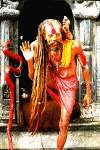
North-India |
Field
Work 2.
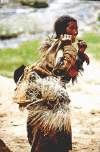
Tibet |
Field
Work 3.
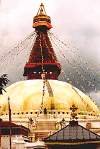
Nepal |
Field
Work 4.
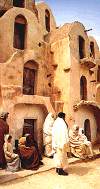
Tunisia |
|
Top


ESSAYS
-
The
Cult of Siva (MA Thesis) [Spring 1999]
-
The
followers and practices of Hindu Tantra (TKBF MA
Thesis) [Spring 1997]
-
Indian
Ascetism
(BA) [Spring 1998]
-
Indian
Ascetics [Spring 1998] - (Exhibition Plan Outline)
-
The
Indian Cast System [Autumn 1997]
-
Franz
Boas [Spring 1997]
-
The
Vision of Apocaliptic Trends [Spring 1997]
-
How
I do my Research [Autumn 1997]
-
The
Aghori Ascetics [Autumn 1996]
-
The
Internet Myth [Autumn 1996]
-
Tunesian
Drug ‘96 [Autumn 1996]
-
Manali
‘95
[Spring 1996]
-
Chenrezig
[Spring 1996]
-
Kashmir
‘95
[Autumn 1995]
-
Indian
Drug ‘95 [Autumn 1995]
 Interested?
Write and
I will send you a copy.
Interested?
Write and
I will send you a copy.
All
written documents are available for reading in the »
Library.
Top

Want
to know more?
»
Check out my work at the ELTE
BTK and the Buddhist College.
»
My Oriental Studies relate
too. |

|


